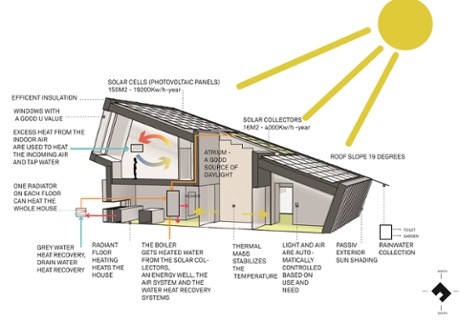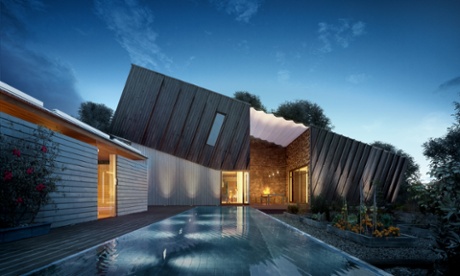Rugeley coal plant to be transformed into a sustainable village
An old coal power station is set to be transformed into a “sustainable village” of 2,000 homes powered by solar panels, in the biggest redevelopment yet of a former UK power plant.
French firm Engie said it had decided against selling off the Rugeley site in Staffordshire and would instead build super efficient houses on the 139-hectare site as part of its bid to “move beyond energy”.
Half of the energy required by the new homes will come from green sources, predominantly solar, which will be fitted on rooftops, in a field and even floating on a lake.
The company is planning for 10 megawatts of solar capacity in total, equivalent to one of the UK’s smaller solar farms.
Batteries will be used across the site, both in homes and at a communal power storage facility, to balance out electricity supply and demand.
The firm is also claiming the homes will be so efficient they will use nearly a third less energy than average new builds. Heating will come not from gas boilers but electric devices such as heat pumps.

Wilfrid Petrie, Engie UK’s chief executive, said: “We are positioning ourselves as going beyond energy into place-making. It’s an example of us closing down our coal power plant and, instead of selling off the land, we’ve decided to regenerate it ourselves.”
Rugeley, which stopped generating electricity in the summer of 2016, is one of several coal plants to close in recent years due to economic pressures and environmental regulations.
There are seven operational coal power stations left in the UK, but all are due to shut by a government deadline of 2025, raising questions over what happens to the sizeable parcels of land afterwards.
While some energy companies are hoping to build gas plants on or adjacent to the old coal sites, others will need to be decommissioned for other uses.
In Shropshire, regeneration firm Harworth is planning to turn the 97-hectare brownfield site of a former power station into a development of homes and commercial units.
Engie said it was eyeing other sites around the country. “There’s a list of similar sites, which we are looking at. It’s not in the hundreds, but there are several,” Petrie said.
Peter Atherton, an analyst at Cornwall Insight, said putting local electricity generation at the heart of new housing projects was almost becoming a prerequisite for developers to get through planning.
“It is the way of the future. There is no doubt large scale housing developments going forward are going to have some form of local generation because it is all the craze,” he said.
Around 30% of the Rugeley project will be classified affordable homes, though it is not clear how much the green energy measures and high building standards will add to the upfront cost of the properties.
Consultation on the scheme starts this month, with construction due to start next year and demolition of the former coal plant – including the cooling towers – due to finish in 2020, with plans for the first people to move in the year after.
guardian.co.uk © Guardian News & Media Limited 2010
Published via the Guardian News Feed plugin for WordPress.

